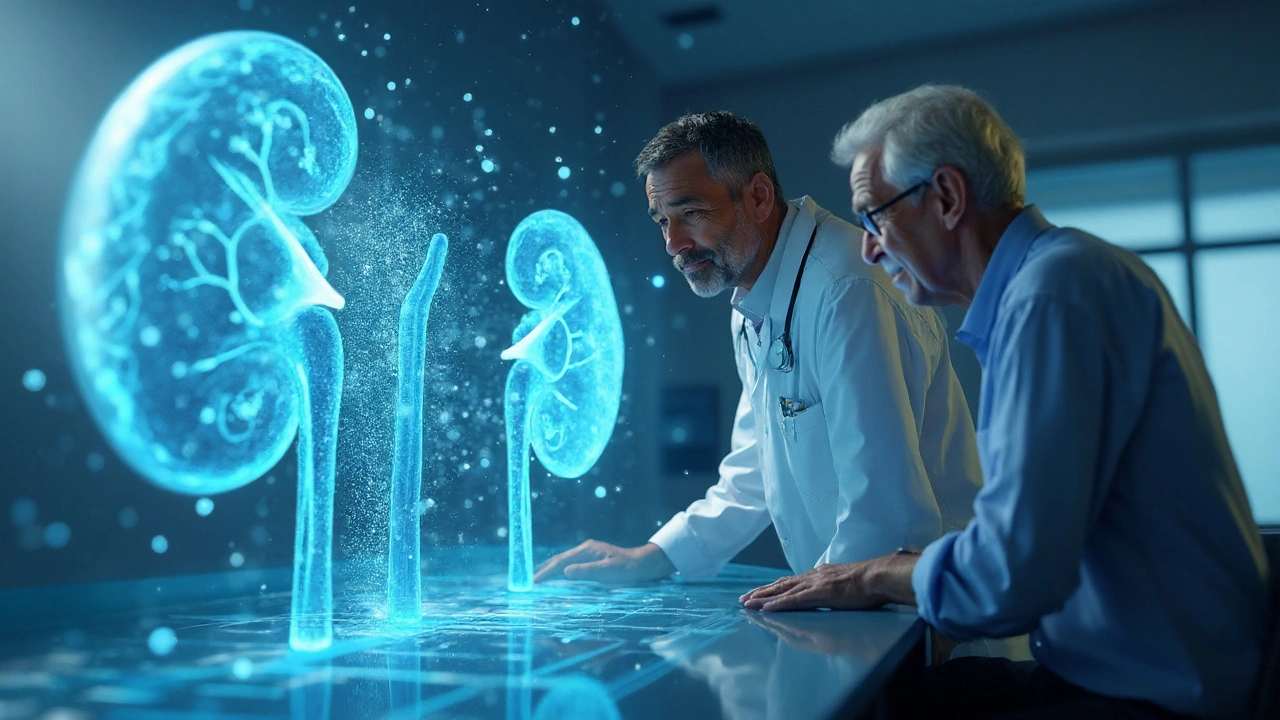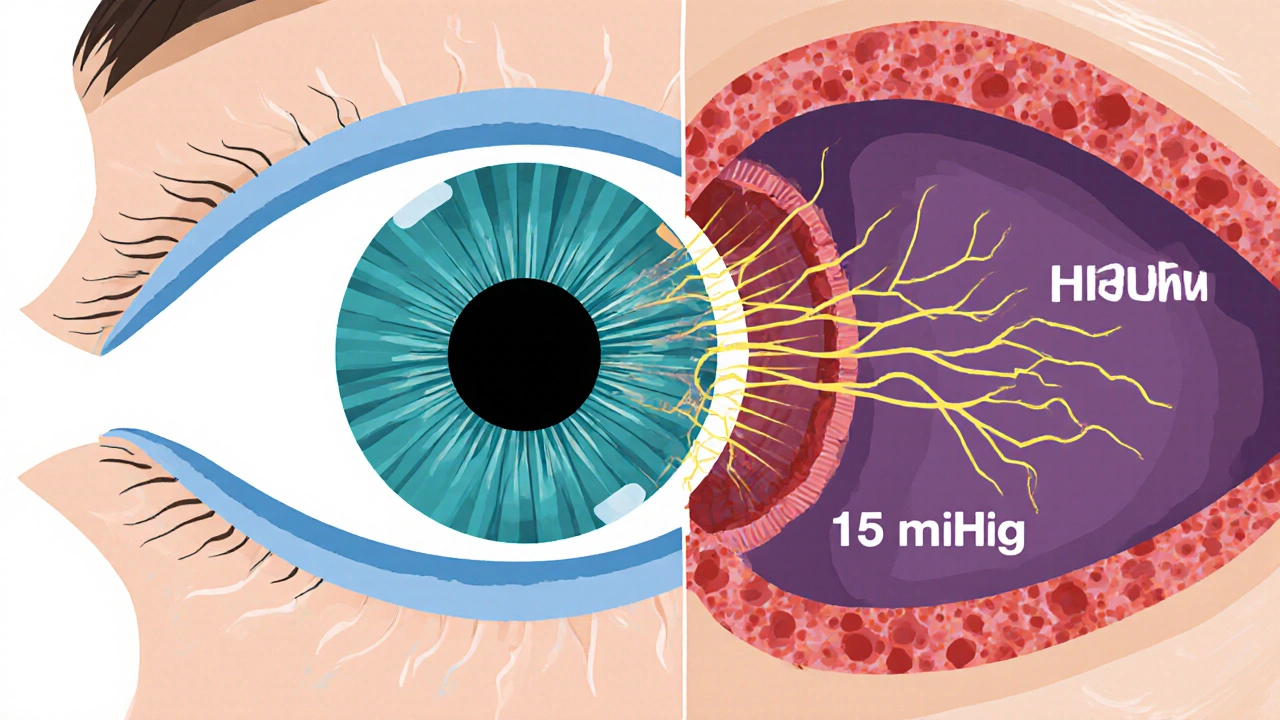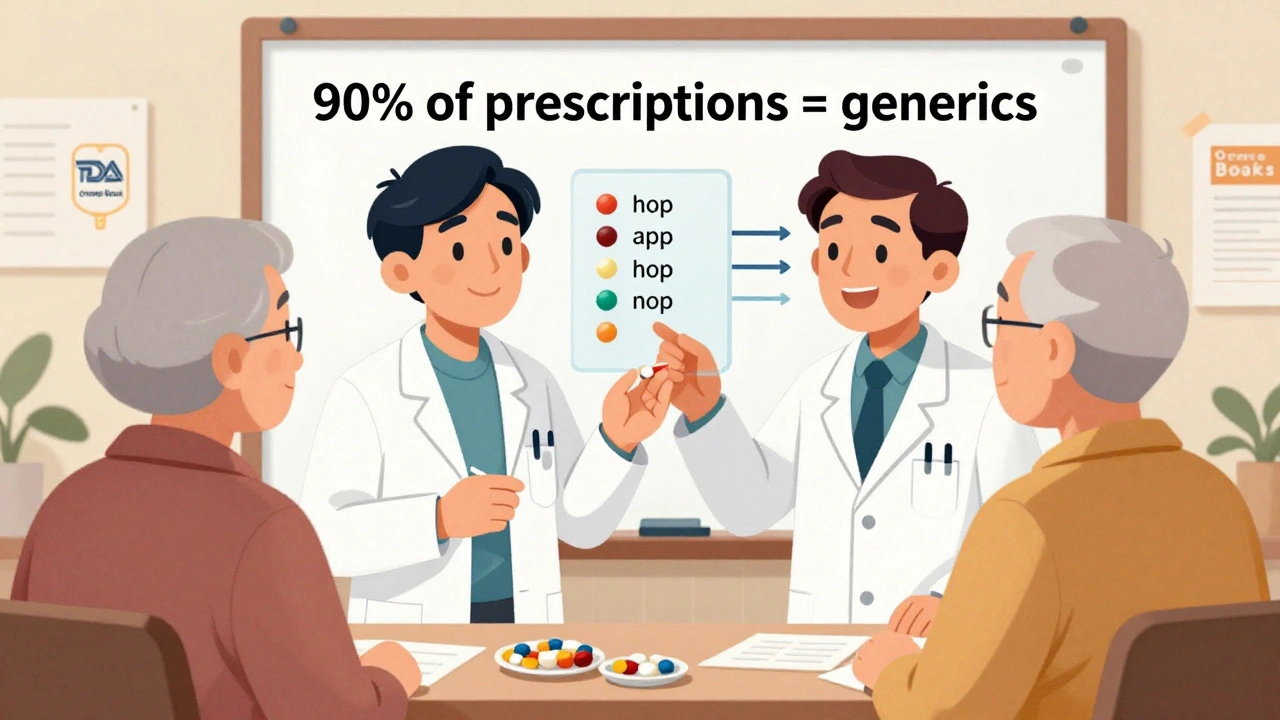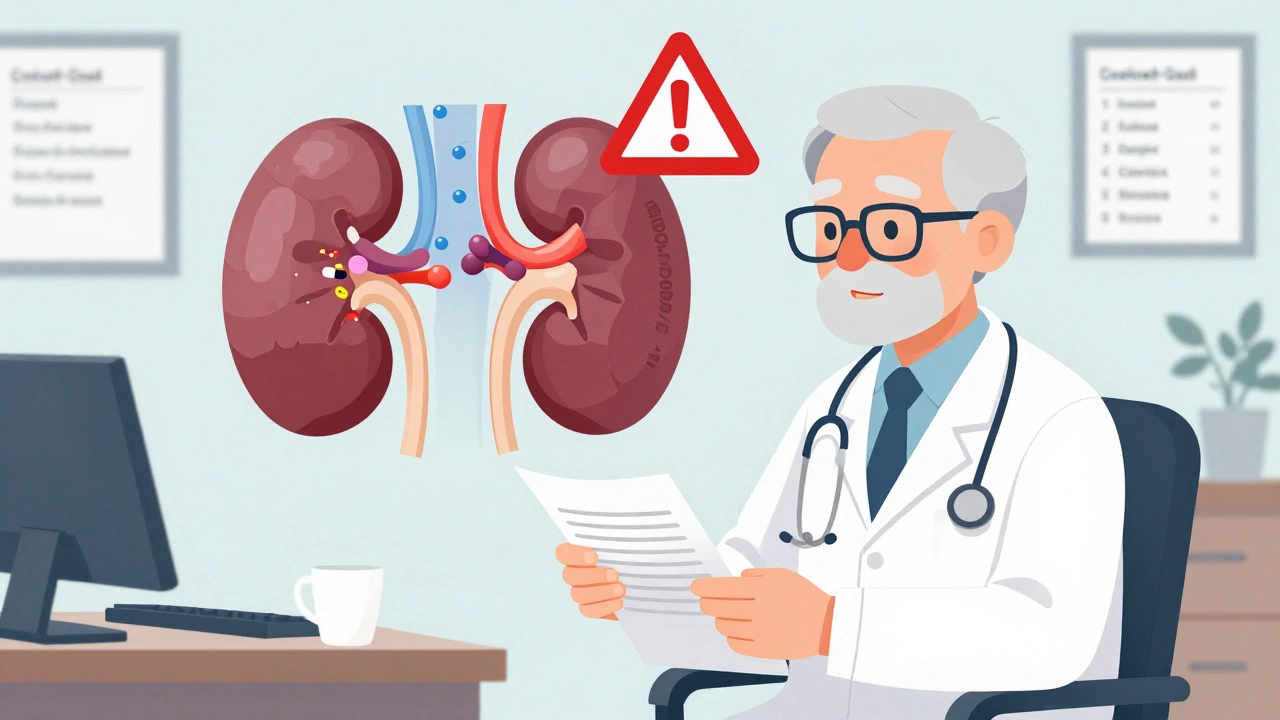TL;DR
- Kidney disease can reduce calcium levels by impairing vitamin D activation and phosphate balance.
- Low calcium triggers secondary hyperparathyroidism, worsening bone and cardiovascular health.
- Key labs: serum calcium, ionized calcium, phosphate, PTH, 25‑OH vitamin D, 1,25‑OH vitamin D.
- Treatment mixes calcium supplements, active vitamin D analogues, calcimimetics, and dialysis adjustments.
- Regular monitoring and individualized care prevent complications like renal osteodystrophy.
What is Hypocalcemia?
Hypocalcemia is a condition where serum calcium drops below the normal lower limit (usually < 8.5mg/dL or 2.12mmol/L). Calcium is the most abundant mineral in the body, crucial for muscle contraction, nerve signaling, and blood clotting. When levels fall, the heart can beat irregularly, muscles may twitch, and bones become vulnerable.
How does Kidney Disease affect calcium?
Kidney disease, especially chronic kidney disease (CKD), impairs the kidneys' ability to convert vitamin D into its active form and to excrete phosphate. This dual hit lowers calcium absorption from the gut and drives phosphate retention, both of which push calcium levels down.
Key Players in the Calcium‑Kidney Axis
Understanding the link means naming the hormones and minerals that act as messengers.
- Parathyroid Hormone (PTH) is released by the parathyroid glands whenever calcium falls; it tells bones to release calcium and kidneys to re‑absorb it.
- Vitamin D (both 25‑OH and 1,25‑OH forms) boosts intestinal calcium uptake; the kidneys perform the final activation step.
- Phosphate accumulates when kidneys can’t excrete it, binding calcium and lowering free calcium levels.
- Fibroblast Growth Factor‑23 (FGF23) rises in CKD, suppressing active vitamin D production and further reducing calcium absorption.
- Calcimimetics are drugs that trick the parathyroid gland into thinking calcium is higher, thus dampening PTH release.
- Dialysis can remove excess phosphate and adjust calcium balance by altering dialysate calcium concentration.
Why Does CKD Spark Secondary Hyperparathyroidism?
When kidneys fail to make enough 1,25‑OH vitamin D, the gut absorbs less calcium. The resulting hypocalcemia signals the parathyroids to crank up PTH production-a condition called secondary hyperparathyroidism. Elevated PTH tries to rescue calcium by pulling it from bone, but over time this leads to renal osteodystrophy, a painful bone disease.
Laboratory Puzzle: Interpreting the Numbers
Doctors use a panel of tests to pinpoint the cause of low calcium:
| Test | Normal Range | Typical CKD Pattern |
|---|---|---|
| Serum Total Calcium | 8.5‑10.5mg/dL | ↓ (often <8.5) |
| Ionized Calcium | 1.12‑1.30mmol/L | ↓, more accurate for symptom correlation |
| Phosphate | 2.5‑4.5mg/dL | ↑, especially in stages3‑5 |
| PTH (intact) | 10‑65pg/mL | ↑ (secondary hyperparathyroidism) |
| 25‑OH Vitamin D | 30‑100ng/mL | Variable, often low |
| 1,25‑OH Vitamin D | 20‑60pg/mL | ↓ due to impaired renal 1‑α‑hydroxylase |
| FGF23 | <200RU/mL | ↑ dramatically in CKD |

Management Strategies: From Supplements to Advanced Therapies
Treatment hinges on the underlying cause and CKD stage. Below is a quick pick‑list.
| Option | Mechanism | When to Use |
|---|---|---|
| Oral Calcium Carbonate | Direct calcium source | Mild hypocalcemia, low phosphate load |
| Active Vitamin D Analogues (calcitriol, alfacalcidol) | Bypasses renal activation | Stage3‑5 CKD, low 1,25‑OH vitamin D |
| Calcimimetics (cinacalcet, etelcalcetide) | Suppresses PTH secretion | Severe secondary hyperparathyroidism |
| Phosphate Binders (sevelamer, calcium acetate) | Reduces phosphate absorption | Hyperphosphatemia driving low calcium |
| Dialysate Calcium Adjustment | Modifies calcium influx during dialysis | Inadequate calcium control despite meds |
Choosing a regimen is a balancing act. Too much calcium can cause vascular calcification, especially in dialysis patients. Hence, clinicians aim for the "sweet spot" - enough calcium to prevent symptoms but not enough to spark calcification.
Practical Tips for Patients and Caregivers
- Know your numbers. Track calcium, phosphate, and PTH every 3‑6 months.
- Follow dietary advice: moderate dairy (source of calcium) but limit high‑phosphate foods like processed meats and sodas.
- Take calcium supplements with meals to improve absorption.
- If on calcimimetics, report any nausea or low blood pressure promptly.
- Stay active. Weight‑bearing exercise supports bone health even when calcium is low.
Related Concepts You Might Explore Next
Understanding hypocalcemia in kidney disease opens doors to other linked topics:
- Renal Osteodystrophy - the bone remodeling disorder caused by prolonged secondary hyperparathyroidism.
- Cardiovascular Calcification - how excess calcium‑phosphate product deposits in arteries.
- FGF23‑Targeted Therapies - emerging drugs that aim to lower this phosphaturic hormone.
- Kidney Transplant Outcomes - why calcium and PTH often normalize after successful transplantation.
Bottom Line
When kidneys falter, the whole calcium‑phosphate‑PTH network gets wobblier. Recognizing the pattern early, ordering the right labs, and tailoring therapy can keep patients out of the bone‑pain hallway and away from dangerous heart calcifications. That's why a coordinated approach-nephrologist, dietitian, and primary care-makes the biggest difference.
Frequently Asked Questions
What serum calcium level defines hypocalcemia?
Clinically, total calcium below 8.5mg/dL (2.12mmol/L) or ionized calcium under 1.12mmol/L signals hypocalcemia. Exact cut‑offs may vary slightly by laboratory.
Why does phosphate rise in kidney disease?
Healthy kidneys excrete excess phosphate. As kidney function declines, phosphate clearance drops, leading to accumulation. This excess binds calcium, further lowering free calcium levels.
Can I treat hypocalcemia with over‑the‑counter calcium pills?
OTC calcium can help mild cases, but in CKD you also need to manage phosphate, vitaminD, and PTH. Unsupervised high‑dose calcium risks vascular calcification, so always follow a nephrologist’s plan.
What are calcimimetics and when are they prescribed?
Calcimimetics (e.g., cinacalcet) bind to the calcium‑sensing receptor on parathyroid cells, tricking them into sensing higher calcium. They are used when PTH remains high despite vitaminD and phosphate control, usually in stage4‑5 CKD or dialysis patients.
How often should I monitor my calcium and phosphate levels?
For most CKD patients, labs every 3months are standard. If you’re on active vitaminD or calcimimetics, the doctor may check monthly until stable.








14 Comments